There was a time earlier this year, when I was hobbling around with the help of a crutch, when I thought that I would have difficulty scraping together five gigs that I’d actually seen; how wrong was that? It’s been difficult to narrow this list down to five, so I think there might be a few honourable mentions as well. So, in absolutely no order at all are my favourite live shows of 2014.
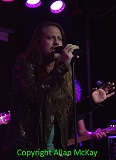 Jim Stapley Band at 93 Feet East
Jim Stapley Band at 93 Feet East
Jim Stapley’s debut album almost made my top five albums, but there was absolutely no doubt about this live performance. Jim has a phenomenal soulful rock voice and he has pulled together a superb band to deliver the songs live. This was an album launch gig featuring virtually all of the album “Long Time Coming” (plus a cheeky cover of Rihanna’s “We Found Love”) and, despite atrocious weather and a half-full venue, Jim and the band gave it everything. The songs were strong, the band were cooking on gas, but what a voice.
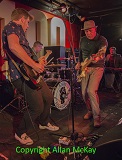 Stone Foundation at The 100 Club
Stone Foundation at The 100 Club
Towards the end of a very busy year for the band, this was an appearance at the annual Delicious Junction bash and another headline slot at The 100 Club with a set based solidly on the “To Find the Spirit”. All of the band members are great players but, despite the solos, this isn’t about individuals, it’s about the group; it’s the perfect combination of a locked-in rhythm section, keyboards and horns. It was also a chance to see how the new members Gareth John (trumpet and flugelhorn) and Rob Newton (congas) had bedded in. It’s fair to say that the horns sounded better than ever and the congas added a little bit of icing on the cake. It was a great set from the band and a stomping encore of “Jumping Jack Flash”. Enough said.
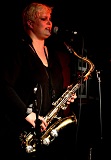 Little Devils at The 100 Club
Little Devils at The 100 Club
Yeah, The 100 Club again and it’s blues Jim, but not as we know it; Little Devils are fronted by singer and multi-instrumentalist (sax and flute), Yoka. The rhythm section of Graeme Wheatley and Sara-Leigh Shaw (aka the Pintsized Powerhouse) built a solid base for Big Ray’s guitar and Yoka’s vocals and instrumental solos. The quality of the playing alone would put this gig up there with the best this year but this is also great fun; the band obviously enjoy themselves and the audience will always pick up on that. Great performances and big smiles all around the room; that’s a pretty good combination for a great night.
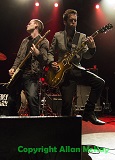 Federal Charm and Ian Hunter’s Rant Band
Federal Charm and Ian Hunter’s Rant Band
This was the final night of the Ian Hunter tour and the audience was in a party mood. It’s not the first time I’ve seen Federal Charm but they seem to get better every time. They got a huge cheer when they strolled on to the Shepherds Bush Empire stage and powered their way through thirty minutes of melodic blues rock featuring their powerful cover of “Reconsider” before making way for Ian Hunter. What a legend; played for two hours and kept the audience spellbound throughout, and the voice still sounds great. We even got an appearance from Mick Ralphs for the encore. Top night.
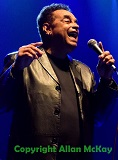 Gary Bonds, Southside Johnny and The Asbury Jukes
Gary Bonds, Southside Johnny and The Asbury Jukes
Now this sounded like a great idea. 60s legend, and big influence on the Asbury Park scene teams up with Southside Johnny for a UK tour; I’ll even pay for tickets for that. Albany Down, despite a ten-second soundcheck, got the audience nicely warmed up for the main event which was a set from Gary Bonds (with some help from Southside) and a set from Southside (with a little help from Gary Bonds), both backed The Asbury Jukes. As ever, the superb musicians (Jeff Kazee, Tom Seguso, John Conte, Glenn Alexander, John Isley, Chris Anderson and Neal Pawley) fitted together perfectly and reacted instantly to any curveballs thrown by Southside. Seriously great players but they know how to have a bit of fun as well. They’re a great attraction as The Jukes, but Gary Bonds just tipped it over the edge.
It was incredibly difficult to narrow this down to only five gigs and there are a few more which deserve honourable mentions. I saw Vera Lynch three times (including their final gig at The Barfly in Camden and a gig in a Shoreditch shop window), The Kennedys and Edwina Hayes at Green Note and Dean Owens and Black Scarr on Eel Pie Island and all of those were great nights. Here’s to many more in 2015.
So, purely in alphabetical order (by album title) because there’s no way I’m trying to rank these in order of preference. They’re all very different and I can recommend any one of them to any real music fan; these are my five favourite albums of 2014.
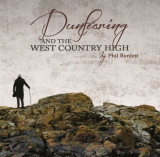 “Dunfearing and the West Country High” – Phil Burdett
“Dunfearing and the West Country High” – Phil Burdett
Phil Burdett’s latest album (on Drumfire Records) was a complete surprise for me. I’d heard Phil play a solo acoustic set a couple of years ago on a night out with the Riot Squad, but this was a completely different beast. “Dunfearing…” is the first part of the “Secular Mystic” trilogy, which should be completed with the release of parts two and three in 2015. It’s an album that sounds gorgeous; you could just sit and let its mix of folk, rock, country and a bit of jazz wash over you, but a little bit of extra effort and careful listening brings out all of the detail that Phil and the musicians have packed in to it; and there’s a lovely tribute to the late Jackie Leven. After reviewing the album, we also managed to grab an interview with Phil during the summer, which is a fascinating insight into a great songwriter.
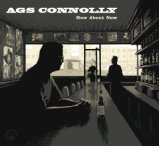 “How About Now” – Ags Connolly
“How About Now” – Ags Connolly
By sheer coincidence, also on Drumfire records, was the debut album from Ags Connolly, “How About Now”, which is now also available in a lovely limited edition vinyl pressing. Ags is based in Oxford but his roots are deep in the American South and his genre is a country offshoot known as Ameripolitan. He takes the outlaw attitude of artists like James Hand, Willie Nelson, Johnny Paycheck et al and gives it a personal twist with some very poignant songs. The album was produced in Edinburgh by his Drumfire labelmate, Dean Owens, and works well with full country band arrangements as well as the powerful solo acoustic guitar backing of the closing song “How About Now” (which was a genuine one-take recording).
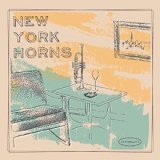 “New York Horns” – New York Horns
“New York Horns” – New York Horns
I know; you’re surprised that I’ve picked a jazz album. Truth is that I love to hear a good horn section, and most horn players away from the day job like to stretch themselves with a bit of jazz. The horns in question are John Isley (saxophone), Chris Anderson (trumpet) and Neal Pawley (trombone), better known as the horn section of The Asbury Jukes, aided and abetted by Jeff Kazee (keys) and Glenn Alexander (guitar). There isn’t a bad, or even a mediocre track on the album and with moods ranging from the blues of “Strollin’ with Sean” through the evocative, mellow “Morningside at Midnight” to the 24-carat soul of “Can’t Stand to See You Cry”, there’s something for everyone.
 “To Find the Spirit” – Stone Foundation
“To Find the Spirit” – Stone Foundation
And continuing on the soul theme, how about some genuine home-grown English West Midlands soul? Stone Foundation has been steadily building up a devoted following for about ten years now, but “To Find the Spirit” may turn out to be the game-changer for them. The band takes influences from all over the soul spectrum to create a sound very much of this century but which appeals to very disparate groups of fans. The album grabbed me from the first few bars with the Hammond and horns intro of “To Find the Spirit” and impressed from start to finish. After 10 months (and seeing the band live three times), the standout song is definitely “Don’t Let the Rain”, driven along by Neil Sheasby’s slinky bass groove but, again, there’s no filler here.
 “Tone, Twang and Taste” – Pete Kennedy
“Tone, Twang and Taste” – Pete Kennedy
Now the reason this one’s here is that Pete Kennedy (one half of one of my favourite groups, The Kennedys) decided to pay tribute to the pioneers of the electric guitar prior to the rock ‘n’ roll era; the guys who had grab the interest by using technique and melodic invention rather than volume and a thudding 4/4 beat. Pete is a superb technical musician and “Tone, Twang and Taste” is so obviously a labour of love; every song is played with immaculate attention to detail and they all sound like they were great fun to do, particularly Pete’s ukulele version of “Rhapsody in Blue”. The commercial possibilities for this album were always very limited, and that’s one of the reasons I admire Pete so much for producing something that made me smile from start to finish.
You can read the original reviews of these albums on the site complete with all of the links to the songs on Spotify or Youtube; just type the title into the search box and you’re away. Go on, have a listen; they’re all great albums.
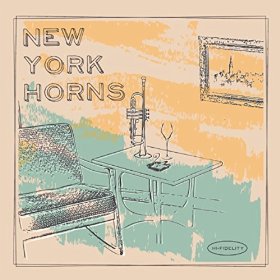 It’s relatively easy to record an album these days; you can do it at home or maybe in a studio and it won’t cost you the earth. You can organise your own distribution online or at live shows; you won’t get rich but you will get some return for your creativity. Not everything released by this route is good; there are way too many vanity projects, but occasionally something really worthwhile emerges. Sometimes a group of talented and like-minded musicians get together and just play the tunes they really want to play. If it makes a few dollars, that’s fine, but that’s not really the point because the musicians are playing the music they want to play and having a bit of fun with their own original material and a few covers. Very, very occasionally the result is an album packed with, superb performances and arrangements that you want to listen to again and again. “New York Horns” is one of those.
It’s relatively easy to record an album these days; you can do it at home or maybe in a studio and it won’t cost you the earth. You can organise your own distribution online or at live shows; you won’t get rich but you will get some return for your creativity. Not everything released by this route is good; there are way too many vanity projects, but occasionally something really worthwhile emerges. Sometimes a group of talented and like-minded musicians get together and just play the tunes they really want to play. If it makes a few dollars, that’s fine, but that’s not really the point because the musicians are playing the music they want to play and having a bit of fun with their own original material and a few covers. Very, very occasionally the result is an album packed with, superb performances and arrangements that you want to listen to again and again. “New York Horns” is one of those.
So, who are the New York Horns? Well the horn players are Chris Anderson (trumpet and flugelhorn), John Isley (tenor and baritone sax and bass clarinet) and Neal Pawley (trombone and vocals) and they’re better known as the horn section of Southside Johnny the Asbury Jukes. Here they’re aided and abetted by fellow-Jukes Jeff Kazee (piano, Hammond B3, keys and vocals) and Glenn Alexander(guitars, dobro, mandolin and vocals) and a rhythm section of Shawn Pelton (drums and percussion) and Tony Tino (electric bass).
The album opens with a very different instrumental take on KT Tunstall’s breakthrough song “Black Horse & the Cherry Tree”. Where the original builds gradually by using a loop pedal for instrumental and vocal parts, the NYH version comes in, after a quick guitar intro, at full strength with Latin American percussion (courtesy of Marc Quinones) and perhaps a hint of early Santana. Chris Anderson’s tone poem “Morningside at Midnight” is next, taken at a walking tempo, and evoking the spirit of Morningside Heights with electric piano, wah-wah guitar and unison sax and trumpet. The Hank Williams classic “Hey Good Lookin’” is the first vocal piece, driven along by a guitar riff and horn fills before the sax, guitar and Hammond solos kick in. “Song for Levon”, a Chris Anderson and John isley co-write is a tribute to Levon Helm. It’s stately and mournful in classic New Orleans tradition and features Southside Johnny as guest harmonica player.
The uptempo jazz-funk of John Isley’s “Little Miss Thing” wouldn’t sound out of place on either of Donald Fagen’s first two solo albums and features the first trombone solo on the album from Neal Pawley; it’s great fun. “Can’t Stand to See You Cry”, written and sung by Jeff Kazee, is a powerful soul song with a superb plaintive vocal and an arrangement that Allen Toussaint would be proud of while “Strollin’ With Sean” is a fairly straightforward blues driven along by a horn riff and it’s another chance for the guys to solo for all they’re worth and have a great time. The final cover on the album is John Hiatt’s “Little Head” which retains the feel of the original while adding punch with horn fills.
John Isley’s “78 Below” opens with an uptempo Nile Rodgers –style lead/rhythm riff which, with the punchy bass, drives the piece along underneath a staccato muted trumpet melody before the mood mellows again with Chris Anderson’s “More Than Tears”. Opening with a restrained combination of piano, acoustic guitar and mandolin, this moody and melancholic piece is perfect for the flugelhorn which Chris uses to carry the main melody. John Isley’s “Under the Hood” is an atmospheric piece using Hammond and the horn ensemble to create the mood and features a muted trumpet solo from Chris Anderson. The album’s closing song, “Nothing Left to Say”, opens slowly in New Orleans jazz funeral style, with a guest vocal by Christine Ohlman before erupting just before the halfway mark into uptempo New Orleans jazz with trumpet and sax counterpoint. There’s also a lyrical message here which underpins the whole album; however bad things get, there’s always music to pull you back, whether you play it or listen to it. It’s a perfect way to close the album.
The beauty of this album is that it was made because the musicians involved really wanted to make it. They had a lot of ideas and they wanted to get those ideas out there to people who might want to hear them. It’s not about focus groups or marketing teams; it’s about strong, sometimes very personal, material arranged well and played superbly. If you need to label it, I suppose it’s jazz, but it also pushes out in other directions as well, towards funk and old school soul; there’s certainly plenty of variety on display. Check out some of the song links here and think seriously about buying yourself a copy, if only to let a bunch of great musicians know that some people out there are actually getting the message.
Available now from Amazon and iTunes.
Last Friday I had the opportunity to spend some time with the legendary Southside Johnny before the final show of his UK tour, featuring Gary “US” Bonds, at Shepherds Bush Empire. He was entertaining and engaging (as always):
AM – We did an interview here three and a half years ago and at that time you spoke to me about this acoustic thing that you might or might not be doing, which was really big news at the time and that’s happened now, so how’s that going?
SJ – It’s really good, it’s a fun thing. It’s really stripped down; we travel in a van together, we have breakfast in the morning as a band (there’s only six of us, with the road manager) and we set up our own equipment and tear it down and it really feels like the old days when you used to have to do that. It was a complete commitment to the whole day of travel, set up, play, tear down and travel again and even though I’m kinda long in the tooth I really enjoy it because it seems so organic and basic; there’s no star turns at all. I love playing acoustic music and it gives us a chance to play George Jones and Emmylou Harris and Bob Dylan and Tom Waits and some Bruce in a different format.
AM – You mentioned a few country artists there; you’ve always been a country fan haven’t you?
SJ – Yes I liked country when I was very young. What I didn’t know is that my mother, way back in the thirties when the ukulele was the big thing, she bought a ukulele from Sears Roebuck and she would sit on the porch with her father (her mother had died young) and some neighbours, and they would sing country songs, so I guess it’s in my blood, it’s the Irish part of me.
AM – I’ve heard you play “He’ll Have to Go” (country classic made popular by Jim Reeves) at The Astoria, I think.
SJ – Well, Soozie Tyrell, who plays violin with Bruce, she has a country band in New York City, and I would go up and do lots of songs with her because they’re real singer’s songs, they’re story songs with great melodies so it’s fun to make that kind of music.
AM – The old Jukes revolving door seems to have slowed down a little…
SJ – Not too much. We’ve got a new saxophone player, John Isley; I think (drummer)Tom Seguso’s been over here.
AM – At the time of the last interview, Joey (Stann, tenor sax) and Ed (Manion, baritone sax) were still with you but they’re obviously off doing other things now. There seems to be lots of side projects going on as well now that the New York Horns have made a record.
SJ – These days it’s a lot easier to make a record for a little money and it’s also easier to manufacture; for a buck apiece you can make as many CDs as you want and there’s a profit margin once you’ve paid for the studio time and the musicians and all the rest of it. I’m lucky that Jon Bon Jovi lets me use his studio but, even if he didn’t, studio time’s not as expensive as it used to be, home recording’s easier and the internet makes it easy to get distribution to all your fans round the world. It’s a good time to be a musician because you can do all the little things you want to do without incurring great expense.
AM – Did the side projects always happen to a certain extent; do we just hear about them more because of social media?
SJ – We’ve always done those things; Bobby (Bandiera, guitar, now playing with Bon Jovi) and I went out for months, here and there, doing a lot of charity gigs and they put us on a plane, in business class, just him and me and a guitar and harmonicas. We went all over and played charity things and it was just a chance to play in hotels and every little place you could find and it was a lot of fun because it was no stress.
AM – I saw you at Sheffield City Hall in 1995, I think, just the two of you doing the stripped back thing and it was a great night.
SJ – Well, if you have confidence in what you’re doing and you have material you think you can accomplish with just a guitar and a harmonica it’s a chance to explore all that too. Years ago Bobby, Rusty Cloud, David Hayes and I played in Paris at the Chesterfield Club. We did a two-week stint there with very little publicity and we rode the Métro and that was a lot of fun too. We all stayed in the same hotel, this funky little place and it was two weeks in Paris. I’m lucky I’ve had the chance to do those things and just explore what making music means other than pedal-to-the-metal trying to earn a living. I can do just about anything I want now. I’m never going to be rich, I’ve known that from the very beginning so there’s not a great stress to be a big star and make a lot of money; I make a living and that’s all I want. I just want to be allowed to do whatever kind of music I want to make.
AM – I was going through some of my very old Jukes records today and it struck me that after Billy Rush left, you got much more involved in the songwriting process; there’s not a lot of your songs on the early albums.
SJ – I was a writer back then but I would write certain things with certain people but the bulk of the song would be theirs and I’d say “forget it, I don’t want to have anything to do with it”. I wrote with Billy but I don’t have the kind of ego that I need to see my name on the album, but now with Jeff and Bobby the songwriting is really a collaboration so I get to write a lot of lyrics that I find interesting like “Into the Harbour” and “Winter in Yellowknife” and stuff like that which is not the norm for romantic love songs.
AM – On “Pills and Ammo”, it struck me that your name’s on every track as a writer. Do you have a certain way of working; do you do the lyrics and Jeff does the music?
SJ – It’s pretty much that way except that if I come up with a musical idea we’ll explore it and he helps me with lyrics; it’s a real collaboration in other words. I’ll come with an idea, a whole lyric and I’ll say “I think it sounds like this” and he’ll find a way to make it sound like what I want, but then he’ll say “what about this…” and we really try to bounce ideas off each other.
AM – I know Jeff’s a big fan of Squeeze and Difford and Tilbrook wrote in that way as well.
SJ – I’m a big Squeeze fan too.
AM – About your audiences; you’ve retained a very loyal audience in the UK. In the US, are the audiences different?
SJ – Well, they speak English. There’s people who come and see us a million times and there’s people who come and see us for the first time and usually we can win people over. It’s the energy and a lot of the music is made to lift you up so it’s not some shoegazer and it’s not some egomaniac, it’s really just music. I think one of the things that keeps people coming back is that it’s never the same night after night and I don’t know where it’s going to go and tonight’s going to be like that too because we’ve got Gary Bonds and we know what we’re going to do but when we get on stage, that may change.
AM – I’ve been watching Billy Walton live for a while and I’ve noticed that his crowd seems to be getting younger. I’ve seen teenagers at his shows but I’ve also seen people in their twenties who know all of the songs. I just wondered if that was happening with The Jukes.
SJ – We do get a lot of younger people; we had a bunch last night in Holmfirth, but we have our loyal fans and they’re the ones that usually get the first tickets and they’re older, but they bring their kids and some of them bring their grand-kids but anybody who’s willing to give us a shot we’re willing to play for as long as they come and have a good time and just enjoy themselves.
AM – November used to be the traditional time for a Jukes tour but the last couple of years you’ve been over during the summer. I’m guessing that’s because of festivals.
SJ – Yes. This year especially, because we had the Cornbury Festival to start it and we’re ending with Bospop in Holland so we had two festivals and we put a bunch of gigs in between and those get to be the anchor gigs. Unfortunately there’s new taxes in England, Foreigner Entertainer Tax (FET) and Hood, who settles everything got hit with it the other night and they wanted £1,400 for FET. Nobody knew exactly what it was but it’s legitimate and all that does is it makes it harder for bands like me to come over here; you can only lose so much money. On the one hand I guess they need the tax money but if they really need that, they should get all those people who hide their money offshore and let us poor bands try to play a little music.
AM – And a lot of musicians are hiding money offshore.
SJ – Well I’m not hiding any money; my money comes and goes and I get to see it as it goes past and that’s about it.
AM – Going back to the festivals, what’s the biggest gig you’ve ever played?
SJ – Probably Knebworth with Led Zeppelin. We did two shows; we did the first one, flew home and did a show in Washington DC, flew back and did the second show at Knebworth and flew home again, if I remember rightly, so it was a lot of flights. And we played about forty minutes but it was fun, it was a unique experience and we met some good people over here.
AM – As far as I can remember, and I was a long way away from the stage, it seemed like you got a pretty good response that day.
SJ – It seemed like that; of course we didn’t the full power that the headline act got (we don’t do that, if somebody opens up for us they get full power, but I’m not ever worried about a band opening up for us, I hope they do well). But I thought Led Zeppelin was terrible; there was no bass in the mix in the audience.
AM – That’s all the serious stuff but I’ve got couple of other questions for you. You’ve now got a huge body of work to choose from when you play; is there anything you feel can’t be left out?
SJ – Well, there’s nothing that can’t be left out, but I’m not there to just indulge myself, I’m there to give people what they want too and you split the difference. I know they want to hear “I Don’t Want to Go Home” and “The Fever” and “Trapped Again” or “Talk to Me” or “This Time It’s for Real” or “Love on the Wrong Side of Town” or whatever and you try to include those but when you twenty-two, twenty-three songs, there’s plenty of room for you to do what you want too. There are times when I say “I’m sick of this song, I’m not doing it” and it lasts for few months then it’s back in.
AM – Here’s one from my sister, who’s a big fan. Is there a song that makes you cry?
SJ – There’s a lot I guess. I’ve got some that I’ve written but Alison Krauss does a song called “I Can Let Go Now” which I think was written by Michael McDonald and it just kills me because I relate it to my mother. I don’t think that’s what it’s really about but for me it is and I just can’t listen to that song. There’s a lot; there are things that really touch me. I wouldn’t be doing if I didn’t get emotionally involved. When I was young and heard certain songs, I either got happy or excited or even felt sexy or touched, and to be part of that tradition is an amazing thing, but I’ve never really lost the idea that if someone sings a great song and really means it then I can get lost in the emotion.
AM – I find it really difficult to listen to “Many Rivers to Cross” after the version Jeff did here in 2010.
SJ – He really puts his heart and soul into it.
AM – Finally, hoping for another scoop, have you get anything in the pipeline?
SJ – Well, Jeff and I have written most of the songs for the next Jukes album; when we get it finished, I don’t know. We’re hoping to get in the studio, perhaps this winter and get it out some time next year. I’d love to get it out by Christmas but that’s just not gonna happen, and I’ve written some songs for a new Poor Fools acoustic thing and I’ve got a couple of other projects in mind too. I could retire if I wanted to, but then what would I do? I’d sit around the house, get fat and drink myself to death, and I can do that on the road.
AM – Johnny, many thanks for making the time for the interview.
SJ – My pleasure, any time.


